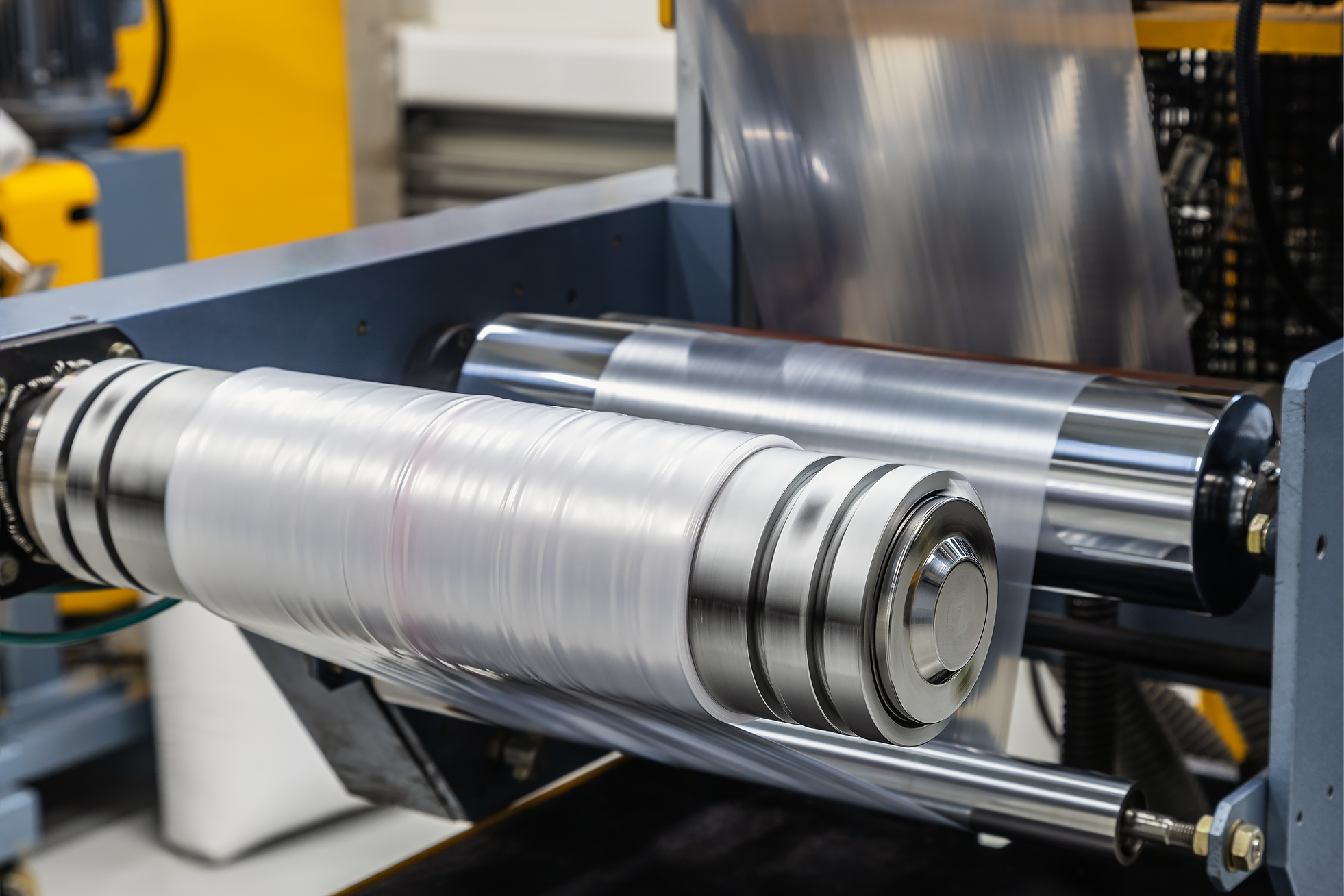Maybe you've seen it before. Production’s steady, OEE looks solid, the alarms are quiet. Then QA flags a batch with inconsistent fill weights, flashing, or warpage. You check resin, tooling, temperature—everything looks normal. So where’s the issue?
Chances are, your equipment started to drift days or even weeks ago. Abnormal vibration patterns and subtle mechanical wear were already affecting your process, but it wasn't enough to trigger a system alarm.
That’s the frustrating blind spot in many plastics plants: by the time alarms go off, you’re already dealing with scrap, rework, or downtime.
Fortunately, if you're watching the right data, you can see those early signs coming. With machine vibration analysis and predictive maintenance, your teams can detect early mechanical changes long before a failure occurs. Here's how vibration analysis works and how your team can spot mechanical issues early, keep production running, improve asset reliability, and protect product quality.
What Does Vibration Analysis Reveal About Rotating Machinery?
At its core, vibration analysis measures how a rotating asset like a motor, gearbox, or extruder screw moves under normal operation. Those vibration signals are captured using wireless triaxial sensors, or accelerometers, which attach easily to rotating machinery.
Those vibration measurements are then converted from the time domain into the frequency domain using a Fast Fourier Transform (FFT). The resulting vibration spectrum maps your equipment’s frequency ranges, natural frequencies, and peak amplitudes.
That spectrum is a fingerprint of how your machine behaves when healthy. A shift in the frequency spectrum or excessive vibration might indicate imbalance, misalignment, a bearing fault, or structural looseness. In plastics processing, where precision is paramount, even slight changes in machinery vibration levels can ripple downstream into resin flow issues or inconsistent mold quality.
When Small Vibration Changes Lead to Big Quality Problems
Mechanical wear doesn’t always announce itself with noise or heat. It starts quietly, with minute frequency shifts that standard alarms can’t detect.
- A small misalignment in an extruder shaft might not halt production but can change shear stress in the melt, leading to part deformation or voids.
- A fan running slightly off-balance can cause pressure fluctuations that distort parts.
- A loosened mount on a motor can alter vibration transmission and affect mold performance.
With eyes on trending RMS values and crest factor over time—either directly or with dedicated support from a condition monitoring engineer (CME)—your team can spot abnormal patterns and intervene early, keeping your equipment stable and your plant efficiency high.
The Link Between Vibration Measurement and Product Quality
In plastics manufacturing, mechanical stability and part quality go hand in hand. Through vibration testing and frequency analysis, you can detect subtle changes early, in real time. For example:
- A rise in 1× rotational frequency during spectral analysis often signals imbalance.
- Shifts in resonant frequencies or high-frequency noise can indicate looseness or structural fatigue.
- Axial vibration trends may reveal drift that leads to uneven wall thickness or flashing.
When you align this vibration data with QA results, the mechanical root cause behind quality drift becomes clear—and you can correct it before it impacts production or customers.
From Monitoring to Insight: Making Vibration Data Actionable
Collecting vibration signals is the easy part. The real value comes from interpreting them, with your CME analyzing and validating the data. With FFT analysis, envelope analysis, and time waveform visualization, you can pinpoint whether an anomaly stems from imbalance, resonance, or looseness in rotating parts.
When you trend this data over time, you build a digital baseline of normal operation for each machine. Deviations from that baseline become early indicators of wear, long before production suffers.
That’s the essence of predictive maintenance: using data to plan interventions proactively, not reactively. Your maintenance staff knows exactly when to act, minimizing downtime while keeping every line running smoothly.
With vibration sensors collecting data 24/7 and a dedicated CME by their side, a plastics film manufacturing facility team saved $1.2 million in the first year of their predictive maintenance program—and prevented 1,200 hours of downtime on a single gearbox save. 👉 Read their success story.
The Power of Combining Vibration Monitoring with Oil Analysis
Pairing vibration monitoring with oil analysis gives you a complete view of both mechanical and chemical wear—two sides of the same story.
While vibration analysis tracks changes in frequency spectrum, vibration patterns, and order analysis, oil analysis reveals microscopic metal particles, oxidation, and contamination. Together, they provide the earliest and most reliable picture of wear inside your rotating equipment.
Imagine your vibration sensors detect an increase at a bearing frequency, and at the same time your oil report shows rising ferrous debris. That correlation is your confirmation: early bearing wear is starting. Acting on machine faults early in the failure curve, prevents contamination, avoids costly downtime, and extends asset life.
This dual approach delivers powerful advantages:
- Early fault detection from two independent data streams
- Fewer false positives than vibration-only monitoring, with oil analysis results validating the presence of contamination or wear (versus speed/load variation or operational noise)
- Clearer insight into root cause (mechanical stress vs. lubrication failure)
- Smarter scheduling for maintenance and part replacement
By merging vibration data and oil condition reports, your team gets a complete picture of machine condition and can make confident, data-backed decisions before problems escalate. For one plastics manufacturer, oil analysis alone led to $897,600 saved on an extruder gearbox, with 336 hours of downtime prevented. 🔍 Get the details here.
Predictive Maintenance as a Quality Strategy
Preventing breakdowns is just part of the story. The real opportunity lies in protecting quality and uptime simultaneously.
When velocity sensors measure small but consistent changes in amplitude, and oil samples confirm matching wear debris, your team has clear evidence that something’s changing. Instead of guessing, you act on data.
An approach that combines vibration monitoring and oil data turns maintenance into a measurable quality control tool. It helps you reduce unplanned downtime, improve first-pass yield, and keep your rotating equipment operating in peak condition.
Getting started with predictive maintenance doesn't need to be costly or complex. Our recent e-book From Reactive to Resilient: How Leading Plastics Plants Are Preventing Failures and Scaling Smarter explains how you can get team buy-in and drive value fast, with real-world applications and essential KPIs you can use to drive and measure success. ⬇️ Download your copy today.
Keep Your Plastics Plant Running Smoothly
Across extrusion, injection, and blow molding lines, your rotating assets—motors, pumps, and blowers—define productivity. Through continuous vibration monitoring, you can:
- Detect bearing defects before failure
- Validate repairs with before-and-after FFT analysis
- Link frequency-domain patterns to mechanical efficiency and asset performance
- Maintain stable machine vibration profiles shift after shift
These small insights create major improvements in reliability, energy use, and production consistency.
Connect with us at AMI Plastics World Expos 2025
You don’t have to wait for alarms to tell you something’s wrong. With vibration analysis, oil analysis, and predictive maintenance, you and your team can see the earliest signs of wear, act decisively, and prevent costly downtime before it starts.
If you’d like to see what early anomaly detection looks like in action, connect with us at the AMI Plastics World Expos 2025. 👉 Schedule your demo in advance, and let's talk about how a predictive maintenance strategy can transform your plant.


















